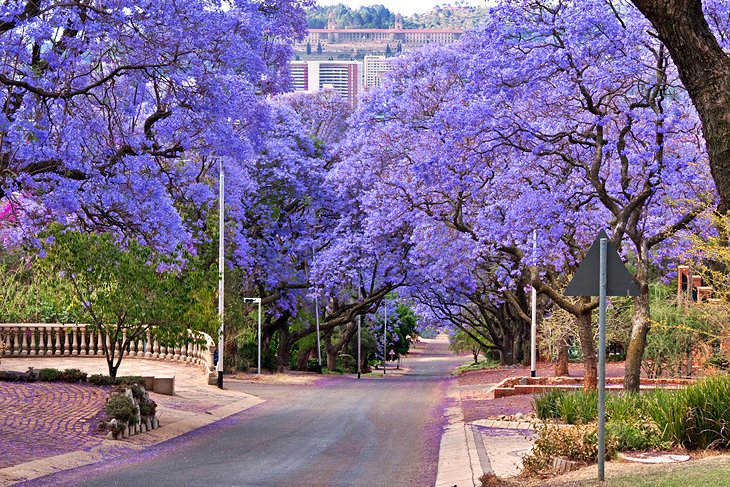Unknown Facts About Johannesburg North Attractions
Table of ContentsThe Facts About Johannesburg North Attractions RevealedJohannesburg North Attractions Things To Know Before You BuySome Ideas on Johannesburg North Attractions You Should Know4 Easy Facts About Johannesburg North Attractions ShownTop Guidelines Of Johannesburg North AttractionsWhat Does Johannesburg North Attractions Mean?
The city grew on the side of the Witwatersrand Key Reef, a below ground stratum of gold-bearing quartz-silica empire that arcs for hundreds of miles underneath the Highveld - Johannesburg North attractions. Most of the gold mines in the city discontinued procedure in the 1970s, however in its day the Witwatersrand gold industry accounted for even more than 40 percent of the world's yearly gold manufacturing.Johannesburg has a warm climate. The city delights in about 8 hours of sunlight per day in both wintertime and summer.
What rain the city receives falls nearly specifically in the summertime months, usually in magnificent late-afternoon electric tornados., where several residents still rely on coal for fuel.

About Johannesburg North Attractions
The equilibrium of the city is inhabited by whites. Lodging differs in personality and top quality. Soweto is well-known for its countless rows of municipally built, two-room matchbox homes, yet it also has a couple of flourishing enclaves in addition to teeming squatter camps, where tens of thousands live without water, electricity, or hygiene facilities.
Physical growth, although somewhat restricted by transport, proceeded quickly as migration to South Africa, and Johannesburg in particular, increased considerably.
The majority of inadequate suburban areas were blended, with bad blacks and whites cohabiting, although the rich suburbs were typically reserved for whites. This transformed with the political election of the National Celebration in the 1948 elections, who started to formalise the system called discrimination. Apartheid officially designated which residential areas each race could stay in under the Group Areas Act.
The previous system of eleven phoned number regions was reorganised in 2006. Marshalltown, as seen from the top of the Carlton Centre. The M1 and M2 run behind the structures, and the southerly suburbs expand past the freeway boundary. The internal city of Johannesburg is located within the city's Area F. The estimated populace of the area is 200,000, [] however the variety of individuals residing in the central city on an informal basis is unidentified, as lots of are illegal aliens. The majority of higher-income homeowners and white people have actually moved to the northern residential areas and have been changed by lower-income black individuals. The unemployment, education and learning, and age accounts of the area are all unknown, as a result of the difficulty of acquiring trustworthy information regarding the location.
A Biased View of Johannesburg North Attractions
Yeoville and Bellevue have a mix of apartment structures and solitary property units on small whole lots. The area lies on a mountainous divide that runs from eastern to west. The most conspicuous geographical attribute is Observatory Ridge, which is called for the huge observatory situated on it. The recreational rooms are no longer used, due to security troubles.

8 Simple Techniques For Johannesburg North Attractions
The eastern suburbs are some of the earliest areas of Johannesburg, check this there are huge neighborhoods of Jewish and other European histories, the bulk of click here to find out more the population is English talking. There are three golf training courses as well as a number of secured ridges with viewsites.
The area is mainly composed of old "matchbox" houses, or four-room residences developed by the government, that were constructed to supply low-cost lodging for black employees during racism. Soweto is an abbreviation, representing "South Western Townships". Street after street in this location is lined with matchboxes; however, there are a couple of smaller locations where flourishing Sowetans have developed houses that are a lot more comparable in stature with those in more upscale suburbs.
Hostels are an additional popular physical attribute of Soweto. Originally developed to house male migrant employees, numerous have actually been improved as residences for couples and households. The N1 Western Bypass skirts the eastern boundary view publisher site of Soweto. The residential area was not traditionally enabled to create work centres within the location, so almost all of its citizens are travelers to other components of the city.
Johannesburg North Attractions for Beginners
The household areas in the north suburban areas are mainly official, with no significant locations of informal real estate, or housing that does not have a long-term structure. This is a well-known area, there is a fad of land use change from household to commercial, particularly along major arterial roadways and around well-known nodes.
Roadways to the eastern and west are less well developed, as there are no highways taking a trip in that direction. In the direction of the north boundary of the city, the density of growth decreases, leaving big areas of primitive land around Midrand.
The 8-Second Trick For Johannesburg North Attractions
The very first residential area to the north of the central city is Parktown, which lies on a hillside overlooking the central city and Hillbrow. It has lots of rich locals and Edwardian-design estates, in addition to the Education and Clinical campuses of the University of the Witwatersrand. The large concrete Charlotte Maxeke Johannesburg Academic Hospital controls the horizon of Parktown.
Comments on “Johannesburg North Attractions for Dummies”